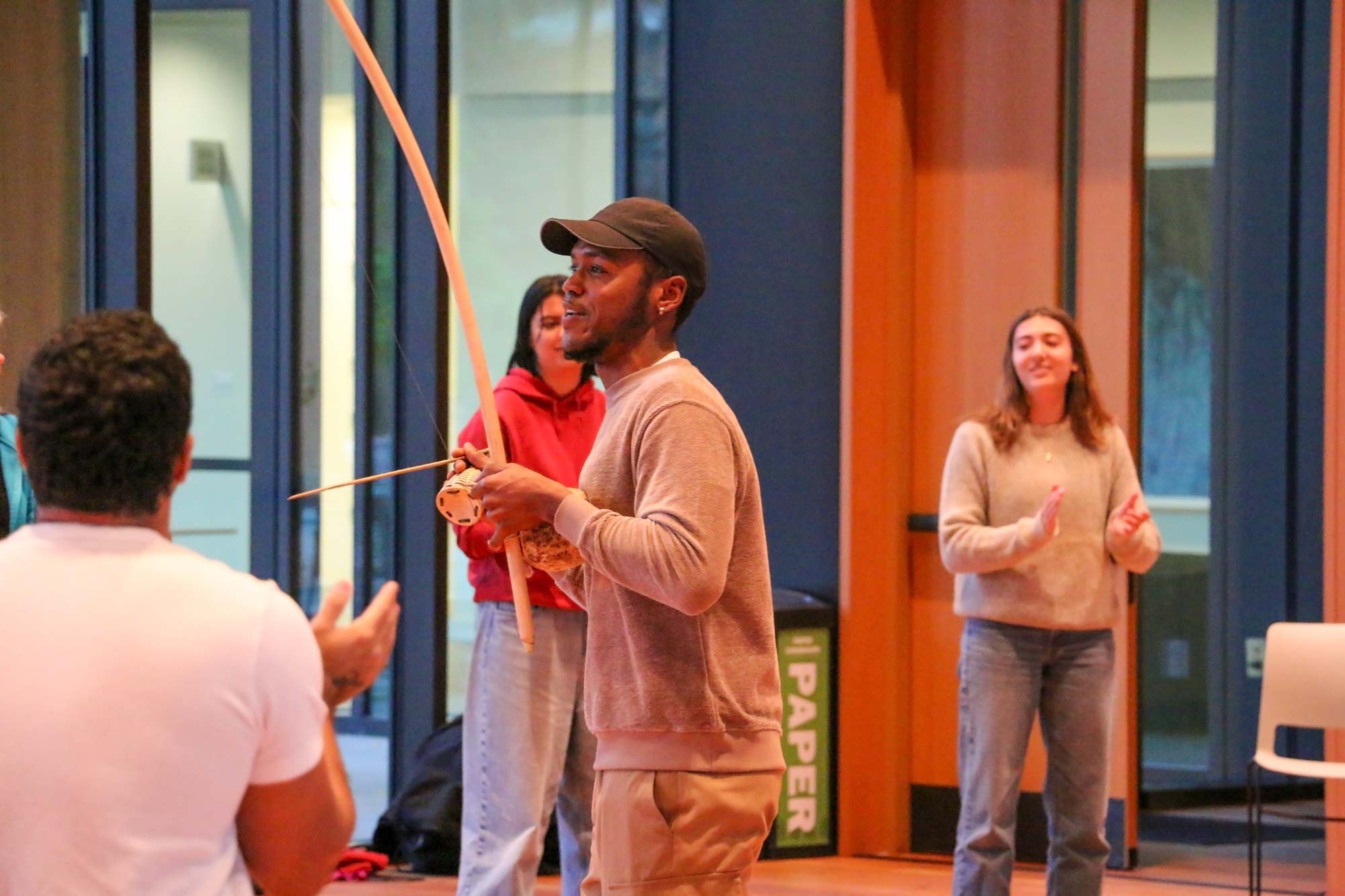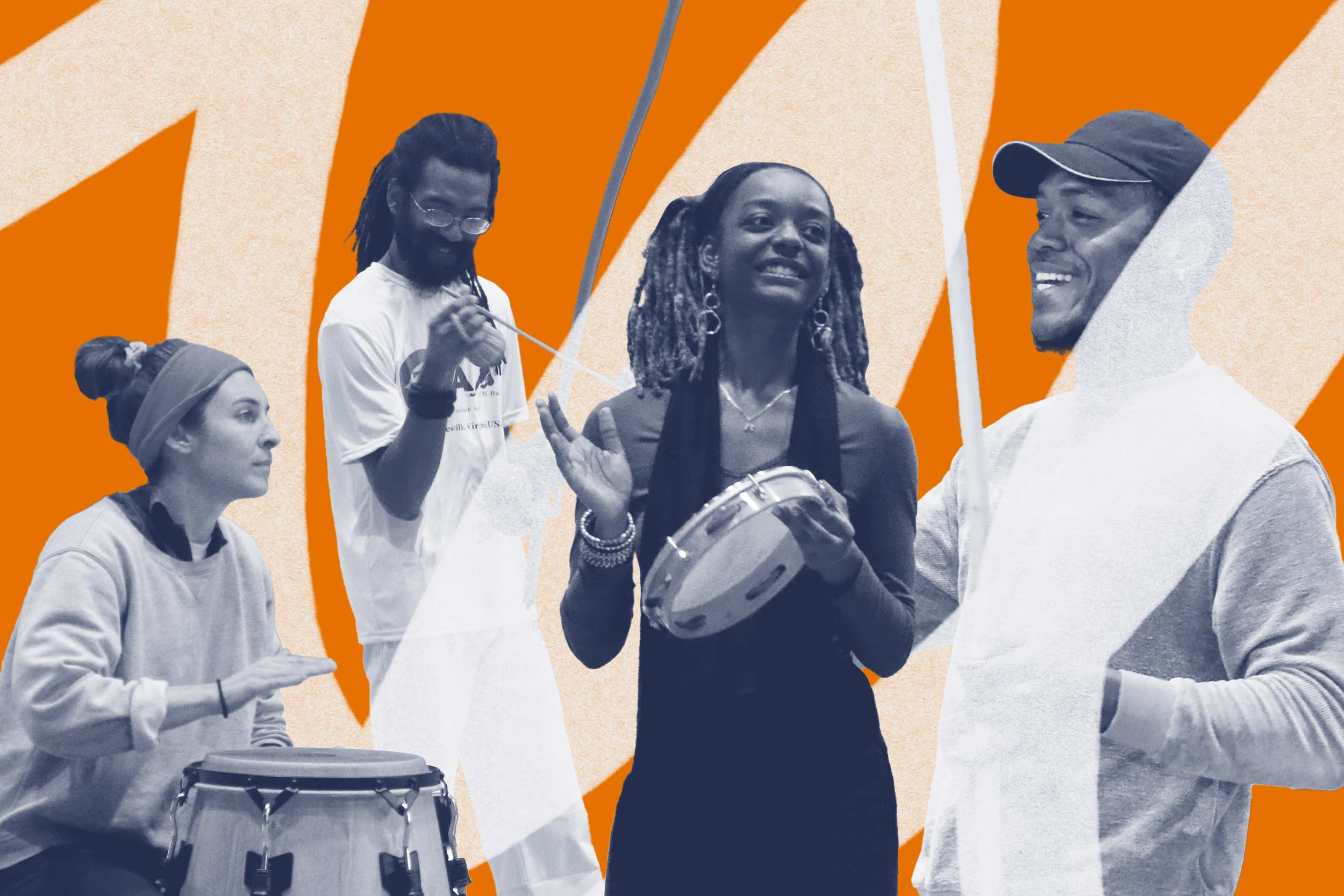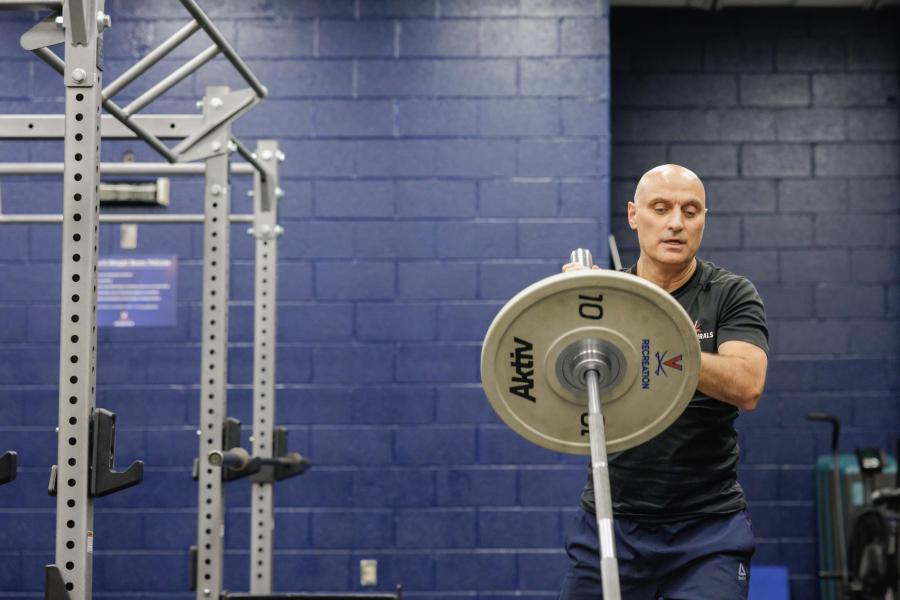From side to side, they moved with rhythm in a nonstop swaying motion that set up kicks, blocks and dodges in the martial art dance known as capoeira.
Capoeira is an Afro-Brazilian martial art that combines dance, acrobatic moves, music and spirituality. Practitioners use kicks, handstands, cartwheels and complex maneuvers in a series of flowing movements that are equal parts expressive dance and self-defense.
The University of Virginia community got a chance to engage in the practice Nov. 11 at an event organized by Guilherme Lemos, a postdoctoral fellow at UVA’s Carter G. Woodson Institute for African American and African Studies, who teaches Afro-Brazilian history.

Mestre Onirê plays the berimbau, a traditional Angolan musical bow commonly used in Brazil. (Photo by Matt Peterson, Contemplative Sciences Center Communications)
It was held at UVA’s Contemplative Sciences Center, which co-hosted the event, and led by Mestre Onirê and Professor Saçi, who teach the martial art in Charlottesville.
The art is centuries old. In the late 18th century, practicing an older form was considered a crime by Brazilian authorities. Another version was outlawed in the 19th century. The art is now recognized by UNESCO as a cultural heritage.
Saçi has taught capoeira in Charlottesville for years and holds weekly classes for adults and children at the Fry’s Spring Beach Club on Mondays, Thursdays and Sundays. He says the practice is about learning your body and understanding how to flow in a way that brings out your particular expression.
“People get discouraged because they want to be able to do all of the things right away,” he said. “But, with capoeira, you have to take your time and essentially become a toddler again, learning where your limbs are and what’s up and what’s down. We forget how tough and awkward it was to be toddlers and how scary it is to fall.”
[Music and clapping]
Speaker: 1, 2, 3, 4. Please try.
1, 1, 2, 3. Two plus. This.
High five this way.
Lemos started his capoeira journey three years ago in his hometown of Brasilia, Brazil’s capital. Moving to Charlottesville, he continued the practice as a way to stay connected to home, which is how he came to meet Saçi and Onirê last year at the Jefferson School, where they were hosting a workshop.
“This is part of a larger goal of mine to connect my students to more of the Charlottesville community,” Lemos said. “It also connects to a class I’m currently teaching on Afro-Brazilian thought, body, space and memory.”
It’s also in line with the Contemplative Sciences Center’s mission to engage both students and the community.
“We were thrilled to hold the workshop here at the Contemplative Commons – to be able to share the benefits of this unique cultural experience and practice with the community already familiar with it, and to a wider audience,” said Ellen Daniels, Contemplative Sciences Center assistant director of communications.
Like many capoeiristas – as practitioners are known – Saçi, whose real name is Reggie Harrison, earned his nickname from his teacher, who named him after a trickster in Brazilian folklore.










